Search Results for Tag: DLR
DLR hypoxia study: All symptoms disappeared after 30 hours
“We were the mice for five weeks,” says Nancy Hansen describing the time she and Ralf Dujmovits – as reported – spent in a hypoxia chamber at the German Aerospace Center (DLR) in Cologne half a year ago. The goal of the study was to find out whether, under certain circumstances, extreme hypoxia can lead to a strengthening of the heart in humans – as previously found out in two experiments with mice in the USA. After an acclimatization phase of around two weeks, the climbers had spent 16 days at a simulated altitude of 6,700 meters or higher, including four days at an oxygen content of only eight percent, which corresponds to 7,112 meters. “I suffered quite a lot,” admits Nancy. “But it was a big privilege to be part of the study.” Ralf is also still impressed by the experience: “I was hard on the edge. To be honest, I wouldn’t do it again. I underestimated the whole thing.” Last week the couple was in Cologne again – for one of several follow-up examinations. The first preliminary results of the study are now available.
![]() read more
read more
“Hypoxia expedition” successfully completed
And suddenly the call came from space: “Here is Alex”. At first Ralf Dujmovits did not know who was talking at the other end of the telephone line: “Alex? Then I suddenly recognized the voice I had heard two days earlier during the broadcast of the rocket launch.” Alexander Gerst inquired from the International Space Station (ISS) about the condition of the German climber and his Canadian partner Nancy Hansen in the hypoxia chamber of the German Aerospace Center (DLR) in Cologne. “It sounded like he was sitting next door.” For a quarter of an hour, Ralf, the first and so far only German climber to have scaled all 14 eight-thousanders, spoke to “Astro Alex”, the first German astronaut to take command of the ISS. “He was very interested in our experience in the lab. That was great.” Of course, Nancy talked to Gerst too. For both climbers it was a “real highlight”, says the 49-year-old Canadian.
![]() read more
read more
Prince and princess in the hypoxia chamber
Bottled oxygen on a mountain has always been out of the question for me. On principle. Today I made an exception – for a “virtual mountain”. To be able to visit Ralf Dujmovits, the only German mountaineer who has scaled all 14 eight-thousanders, and his partner, the Canadian climber Nancy Hansen, it is mandatory to use a breathing mask. After two weeks in the hypoxia chamber of the German Aerospace Center (DLR) in Cologne, the two test persons have reached the simulated target altitude of 7,112 meters. The percentage of oxygen in the air, normally 21 percent, was gradually reduced to eight percent by adding nitrogen. “It’s like climbing a mountain. The acclimatization is almost done, now we’re heading for the summit,” says Ralf. “The time on the summit will be of course much longer.”
![]() read more
read more
Dujmovits: “We are in good hands here”
The doors have closed behind Ralf Dujmovits and Nancy Hansen. The so far only German climber who has scaled all 14 eight-thousanders and his Canadian partner moved in a 110-square-meter hypoxia chamber of the German Aerospace Center (DLR) in Cologne on Tuesday. As reported, the two mountaineers are participating in a study conducted by DLR in cooperation with the University of Texas to investigate whether extreme hypoxia can also have a positive side effect for human beings. US researchers from Texas found in two experiments with mice that heart muscle cells devided when the animals were exposed for two weeks to oxygen deficiency corresponding to conditions at 7,000 m. In mice which had previously been triggered myocardial infarctions, cardiac function improved after two weeks of hypoxia.
Medical control around the clock
Ralf and Nancy, both healthy, are the subjects of the pilot study. They are to stay in the hypoxia chamber for about a month. In the first few weeks, acclimatization as on a Himalayan expedition is simulated. The oxygen percentage in the air will be gradually lowered and temporarily increased only twice in between – as if the two climbers would descend again to breathe thicker air. The last two weeks, the 56-year-old German and the 49-year-old Canadian are to spend in a simulated height of 7,000 meters. The experiment can be stopped at any time in case serious problems arise. A DLR research team monitors Dujmovits’ and Hansen’s state of health around the clock. The daily schedule includes heart and lung function checks, blood and urine tests, fitness checks and so-called “cognition tests”, which check the reaction and perception of the subjects.
Yesterday, I visited the two climbers in their new “home”. That was possible on Wednesday for the last time without breathing mask. After more than half hour in a simulated altitude of about 3,700 meters, I felt a little bit dizzy. I preferred to do the interview with Ralf subsequently in thick air, by phone.
Ralf, you can not get out, there is no daylight, and the oxygen is lowered. That does not sound like a holiday apartment.
![]() read more
read more
Two weeks on a quasi-7000er
This seven-thousander has neither a summit, nor does it offer impressive views. It covers an area of only around 110 square meters – and is located on the grounds of the German Aerospace Center (DLR) in Cologne. A hypoxia chamber within DLR’s medical research lab “:envihab” – the name stands for environment and habitat – will be comfortably furnished in the coming months.
Four weeks in the chamber
In mid-May, Ralf Dujmovits, the only German mountaineer who has climbed all 14 eight-thousanders, and his partner, the Canadian climber Nancy Hansen, will move in there for four weeks. They are taking part in a highly interesting hypoxia study conducted by DLR in cooperation with the University of Texas. The assumption: Although extreme oxygen deficiency threatens life, there could also be a positive effect on the body.
![]() read more
read more
Wedge pillow in the backpack?
Compared to the highest peak on Mars, Mount Everest is a dwarf. Olympus Mons rises 26 kilometers above the surface of the red planet. However, this is not the reason why the German Aerospace Center (DLR) deals with high altitude sickness. For a – as I find, very interesting – study, the DLR is looking for mountaineers, who will ascent in the period from 7 to 20 August after a night on the Gnifetti Hut (at 3,647 meters) to the Margherita Hut. The “Capanna Regina Margherita” is located on the summit of the Signalkuppe in the Valais Alps and is, at 4,554 meters, the highest building in Europe. The DLR scientists want to find out whether it helps against high altitude sickness if climbers are sleeping with a raised upper body. The test persons will use wedge pillows, which ensure that they are raised by 30 degrees. In intensive care units in hospitals such pillows have been used successfully for a long time.
Mountaineers who want to participate in the study at the Regina Margherita mountain hut in August can either register by email at ams@dlr.de or register at the valley station in Alagna or the Gnifetti Hut with the DLR study supervisors. I have talked to Dr. Ulrich Limper who heads the study. The 35-year-old doctor has been working at the DLR for three years.
Dr. Limper, why is an aerospace center interested in the health problems of mountaineers? Are there similarities between astronauts and climbers?
![]() read more
read more
Motorised glider over Everest
Science and adventure are often not far apart. With a motorised glider and a 3-D camera on board scientists of the German Aerospace Center (DLR) and pilots of the “Mountain Wave Project” have explored Mount Everest a week ago. “The conditions were ideal, despite the wind speeds at the summit of Everest, which neared 100 kilometres per hour,” said pilot Klaus Ohlmann. “The almost turbulence-free slope updrafts helped us ascend quickly.” Ohlmann and his co-pilot Jona Keimer started in Pokhara in the Annapurna region and needed one and a half hour to reach the highest mountain in the world. With the images of the special camera a precise 3-D model of the region around Mount Everest will be produced, in which, according to DLR, even small objects of only 15 centimeters size are visible. The model shall be useful for disaster protection and rescue operations. The video of the DLR awakens wanderlust. Check it out for yourself:



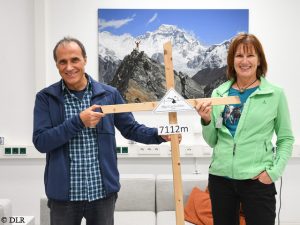

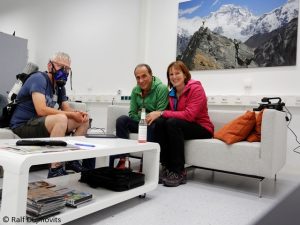
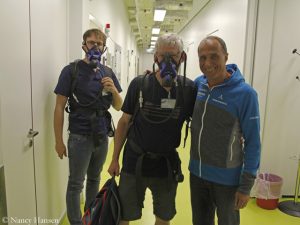
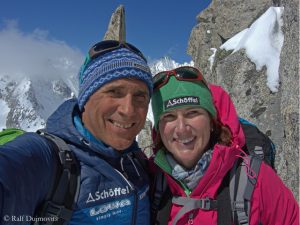
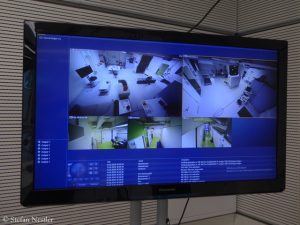
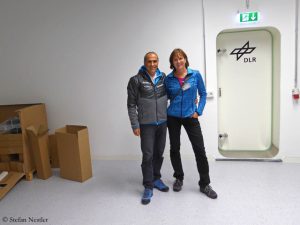

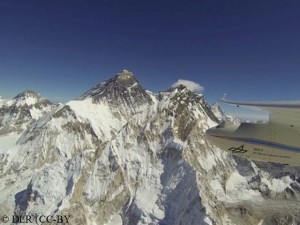

Feedback